-
Posts
25 -
Joined
-
Last visited
Content Type
Profiles
Forums
Events
Blogs
Gallery
Posts posted by SShepherd
-
-
my point was simply to provide the data, not advocate for it
-
43 minutes ago, Lobo said:
That is interesting.
Started using Fiebings Neatsfoot Oil, and neatsfoot oil compound (not identical products) in about 1972 and used them regularly until 2015 (43 years) when I retired and sold the leather business. Never thought about skin exposure, vapors, or any other aspect of using these products. Routinely applied neatsfoot oil with my bare hands while finishing tens of thousands of holsters, belts, and accessories.
Only observation I can offer is that my hands remain youthful with very supple skin as I approach my 8th decade of life. I have grandchildren with older looking hands.
Your methods and results may vary. I will figure out something else to worry myself about.
I knew the "compound" was different than straight neatsfoot but I couldn't found out what the added ingredients were. I've read anything from silicon to parrifin wax
-
If anyone's interested, I found an MSDS sheet on fiebings neatsfoot oil compound.
https://www.statelinetack.com/ContentFiles/Associated_Content/E007499FiebingsNtftOilCompound.pdf -
1 hour ago, RockyAussie said:
Looks pretty good. How did the edges turn out. Are they tapered or flat? You are still adding a hold in strap yet? Just thinking that I would blunt the tip a little more to avoid in curling from getting knocked about.

the edges are rounded, adding a strap and thanks for reminding me about the tip

-
-
-
-
-
16 hours ago, Mocivnik said:
Neither am I

But the answer is NO. I haven't polished them, because I thought that punches are hardened. (hardened + sandpaper = NO GO). But will give it a go!
Will give it a go! Probably from all 4 sides each spike, right?
I know for beeswax but it's taking hell of a long time if I stick it into wax between each punch..I know I'm already super-slow, but this would expand time x10 :/
Twisting the chisel you mean probably from one side to another?
Yes, but I got friend going to US for couple of weeks and he said he can bring me 3-4kg pack of items from US :D therefore I decided to spend all the weight on Tandy :D
Unless they're case hardened, which I highly doubt, sanding/polishing will not effect them (that's how you sharpen a knife).
You only have to worry if you're using them on powered grinder and bring the heat up past the temp. they were tempered at. Your fingers will burn first -
-
On 6/28/2019 at 10:40 PM, Dwight said:
Contact cement the welt to one side of the sheath, . . . take it to a belt sander, . . .
Least that is what I would do. Wish I had $5 for every one I've done for my holsters.
AND, . . . that is one GOOD LOOKING knife there. Gonna build me one of those some day IF . . . IF I live long enough (lol), . . . I want a Jim Bowie that altogether will top out somewhere between 18 and 24 inches.
May God bless,
Dwight
I took it to the grinder with an 80grit ceramic belt, it worked like a charm
-
55 minutes ago, zuludog said:
I also make knife sheaths, but I think this is a rule of thumb for most leatherwork -
The distance of the line of stitches from the edge of the piece should be that of the thickness of the leather, even if there are a few thicknesses of leather
For example, I make sheaths from 3mm veg tan. There is a front, a back, and a welt, making a total thickness of 9mm, but the stitching line is still 3mm. As mentioned, this should be 3mm from the final, finished edge. If you are measuring from a simple, straight cut edge allow for any subsequent dging, sanding, etc. When in doubt remember that it's a lot easier to trim it back than it is to put it back on!
1/8" is 3,175mm so they're near as dammit the same
If you're using very thin leather, say 1mm I would make the distance wider as 1mm doesn't give you much margin for error
Incidentally I no longer use a stitching groover, I just mark the line of the stitching with dividers
Thanks, that's what I was looking for !
I'm seeing more and more people don't use groovers and use creasers. Looks like I'll have to make one now. -
41 minutes ago, JLSleather said:
One popular publication says a general rule is to gauge the distance from the edge equal to the thickness of the pieces being sewn. That's a good starting point.. and you can fine tune your preference from there. On my holsters, the outside stitch is "a strong 1/8 inch" from edges, though the holster edge is frequently 1/4" of material. But I'm talking about that distance from a FINISHED EDGE, not as some who might sew that close, and THEN finish the edge, removing material so the stitch is closer than that.
Distance between stitches would be governed mostly by awl and/or needle size. Holes too close together is called a cut. Again, general "starting point" might be distance between stitches equal to thickness of material. Just to see -- I have sewn 2 layers of 2 oz (total thickness approx 1/16") at 22 spi. Using #42 thread and #16 machine needle. I did not use the resulting assembly - clearly a bad idea, but at least i knew. It didn't tear upon sewing, but it does with any stress at all.
I figured 1/8" was the standard and that proportionally things look better in relation to distance and thickness.
The problem I'm working on is a very thick and wide sheath and trying to keep it from being absurdly wide . -
Is there a guide or rule of thumb to use when deciding from from the edge to lay out your stitching ? Is there a relation between the thickness of the leather and distance or the number of stitches per/inch, or both ?
-
Thanks for the help. The only issue I'm having difficulty resolving is white, I can use dye for the other colors I need.
-
3 hours ago, mikesc said:
Dyes have more pigment than paint, red dye contains red pigment ground very very fine, plus a "liant" ( binder ) and a "vehicle"( solvent )..red paint will have red pigment , plus a liant, plus a solvent, and some kind of "bulker" which may well be transparent to "stretch out the paint , and something to give it some texture, etc etc ..formulations vary from manufacturer to manufacturer..
It is like,the difference between artist's "watercolour paint" ( very pure pigments in a binder) and artist's oil or acrylic paints, both of which can have pigment plus a load of different things added to make them spread evenly, be matt, or glossy, or have a"sheen" or stick to the brush etc etc..dry fast or slow etc..
can you give me an example of why you would use one over the other ?
-
I have a few large, thick knives I'm working on and I want to taper the welt to make the sheaths less thick.
The spine on them is 3/8" tapering to 1/8" at the tip. I plan on using a thinner welt at the edge. This is one of the projects off the grinder.
And suggestions would be helpful and appreciated. -
10 hours ago, garypl said:
Dye will never crack or chip, but acrylic paints are also very durable. Really depends on the project and what you want to color.
If you are trying to add color accents, either should work well. If you want to color an entire object, paint may work on a small object that won’t be flexed much, but if you try to paint a large item like a bag that will see a lot of use, I would expect you would eventually see cracking and chipping.
Paint should be applied in thin coats to minimize chipping. Hope this helps.
Gary
is acrylic dye the same as acrylic paint ?
-
Am I correct in thinking that paint will eventually crack or flake off ? That being the case dye would be the better choice ?
-
16 hours ago, TargetRockLeather said:
That's some beautiful damascus. Seems like a shame to pair it with a cheapo sheath when you have the skills to make one of your own. Show us what you come up with for this one.
Oh that one's long gone, I farmed the sheath out to a pro.
-
Hi everyone,
I've been lurking for a few weeks and thought I'd introduce myself.
I'm a knifemaker, been doing it for 20 years now and I've resisted making sheaths...because I'm stubborn.
I've farmed them out to other guys, bought el-cheapo sheaths and included them at cost to customers but I just can't justify it anymore.
So here I am
here's something I did a while ago, damascus with a japanese steel core, bog oak handle




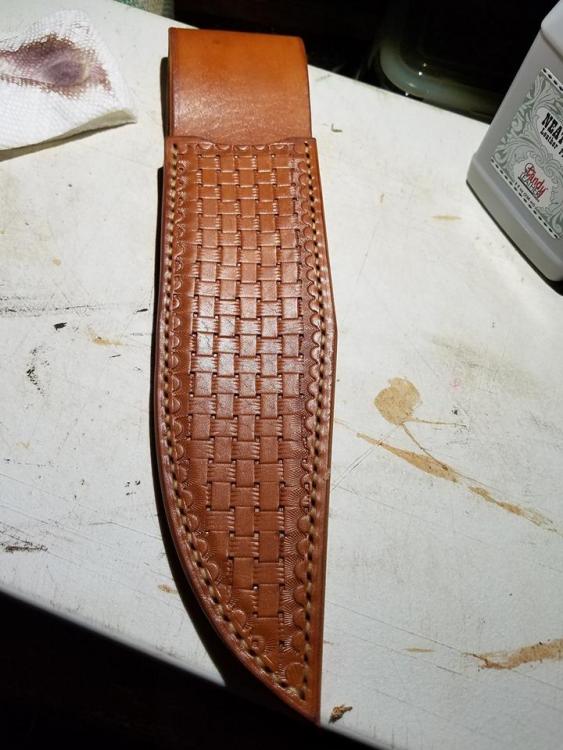
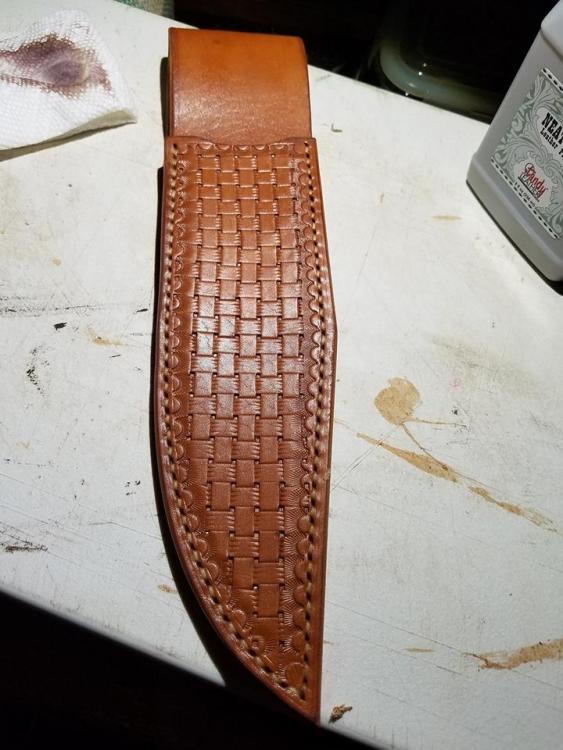
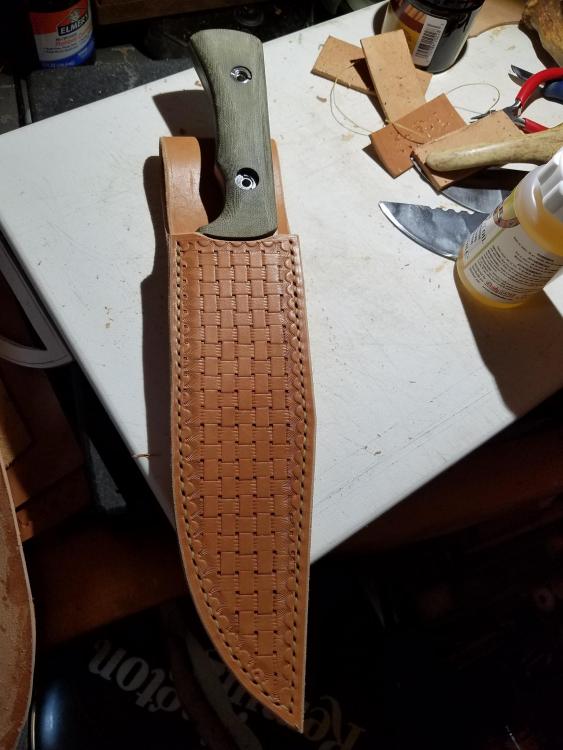
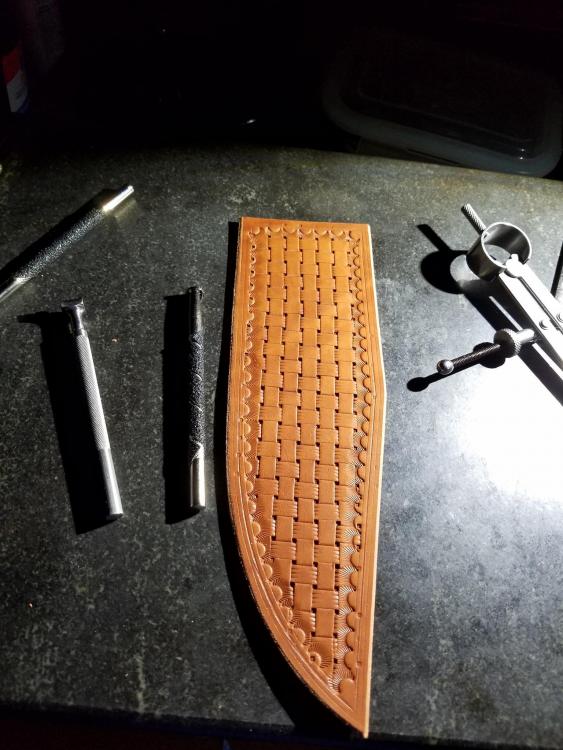
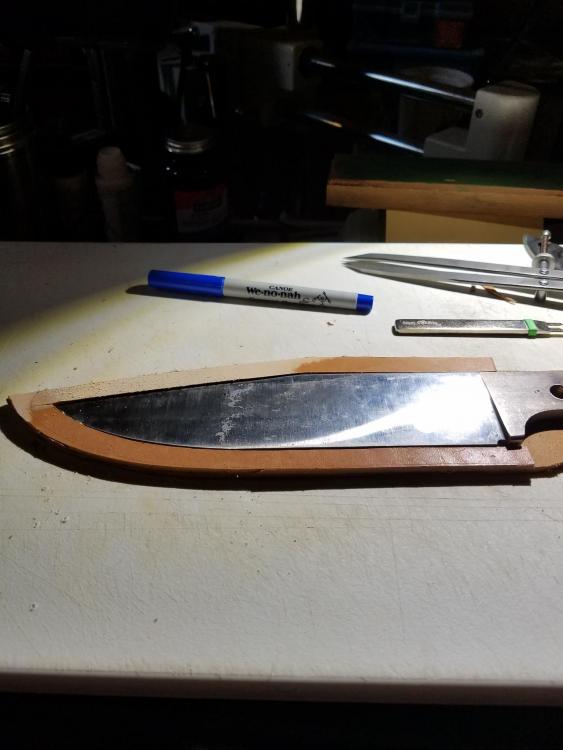
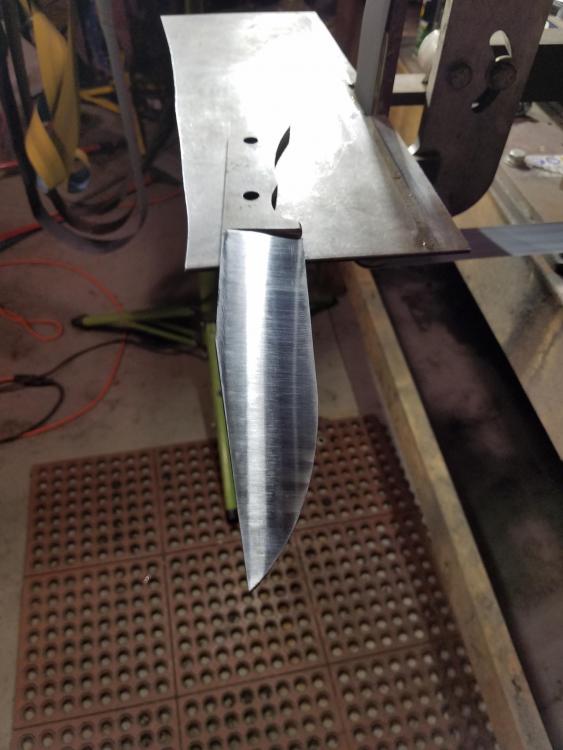
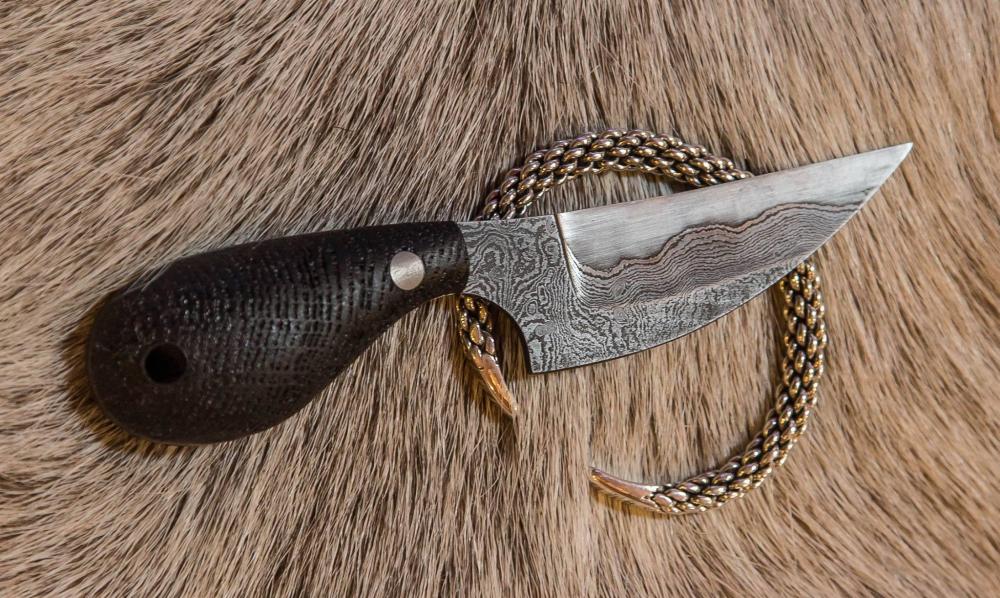
Challenging Knife sheath Build
in Gun Holsters, Rifle Slings and Knife Sheathes
Posted
A suggestion on the handle-
use a countersink on the holes, just to knock the top edge off. They'll be more comfortable and will be less prone to chipping